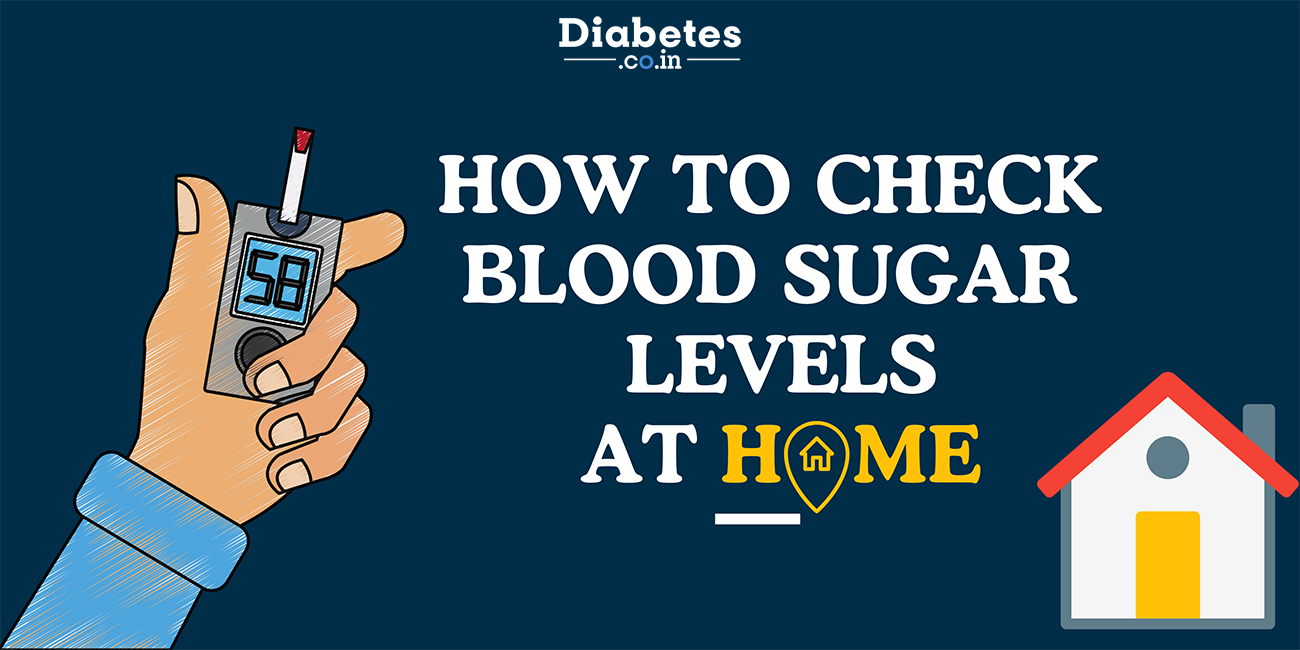Blood sugars of a diabetic patient can be checked (tested) at home using a small device called Glucometer.
Every diabetic patient should have a glucometer at home, to check ones blood sugars as and when required.
 All type 1 diabetic patients have to check their blood glucose before the three major meals (breakfast, lunch, and dinner) and at bedtime. This is so because they are on Insulin therapy, and insulin doses can be adjusted if required.
They also need to check their sugars before exercise, and if they have headache/giddiness/excess sweating, look for hypoglycemia (blood glucose levels < 70 mg/dl).
Type 2 Diabetic patients who are on oral medication (tablets) need not check their sugars so frequently. But those who are on Insulin therapy, they must check their sugars every day depending on:
All type 1 diabetic patients have to check their blood glucose before the three major meals (breakfast, lunch, and dinner) and at bedtime. This is so because they are on Insulin therapy, and insulin doses can be adjusted if required.
They also need to check their sugars before exercise, and if they have headache/giddiness/excess sweating, look for hypoglycemia (blood glucose levels < 70 mg/dl).
Type 2 Diabetic patients who are on oral medication (tablets) need not check their sugars so frequently. But those who are on Insulin therapy, they must check their sugars every day depending on:
 A glucometer pack generally consists of a meter, a box containing test strips, a pack containing lancets, and a lancet pen.
Before using the Glucometer, always read the instructions given in the leaflet (provided to you in the pack). Some of the general steps to use a glucometer are:
A glucometer pack generally consists of a meter, a box containing test strips, a pack containing lancets, and a lancet pen.
Before using the Glucometer, always read the instructions given in the leaflet (provided to you in the pack). Some of the general steps to use a glucometer are:
 All type 1 diabetic patients have to check their blood glucose before the three major meals (breakfast, lunch, and dinner) and at bedtime. This is so because they are on Insulin therapy, and insulin doses can be adjusted if required.
They also need to check their sugars before exercise, and if they have headache/giddiness/excess sweating, look for hypoglycemia (blood glucose levels < 70 mg/dl).
Type 2 Diabetic patients who are on oral medication (tablets) need not check their sugars so frequently. But those who are on Insulin therapy, they must check their sugars every day depending on:
All type 1 diabetic patients have to check their blood glucose before the three major meals (breakfast, lunch, and dinner) and at bedtime. This is so because they are on Insulin therapy, and insulin doses can be adjusted if required.
They also need to check their sugars before exercise, and if they have headache/giddiness/excess sweating, look for hypoglycemia (blood glucose levels < 70 mg/dl).
Type 2 Diabetic patients who are on oral medication (tablets) need not check their sugars so frequently. But those who are on Insulin therapy, they must check their sugars every day depending on:
- Type of Insulin
- Frequency of its dosage.
How to Check Blood Sugars using a Glucometer?
 A glucometer pack generally consists of a meter, a box containing test strips, a pack containing lancets, and a lancet pen.
Before using the Glucometer, always read the instructions given in the leaflet (provided to you in the pack). Some of the general steps to use a glucometer are:
A glucometer pack generally consists of a meter, a box containing test strips, a pack containing lancets, and a lancet pen.
Before using the Glucometer, always read the instructions given in the leaflet (provided to you in the pack). Some of the general steps to use a glucometer are:
- Please wash your hands thoroughly with soap and water and wipe them dry with a clean cloth
- Insert test strip into the meter and wait for the signal (usually the image of a drop or the strip) to appear on the display screen
- Remove the cap of the lancet pen and insert lancet into it
- Prick the side of your finger pulp (do not squeeze your finger)
- Place the edge of the strip to the drop of blood
- Your blood glucose levels will be displayed on the screen
Remember to note down the value along with date and time, whenever you check your blood glucose, so that you can show them to your doctor in the next visit.